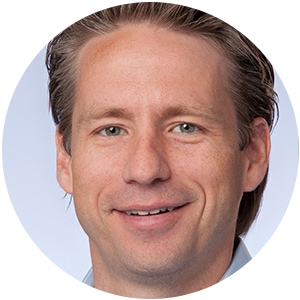Plan sponsors named US-based NISA Investment Advisors—which manages $140 billion of assets, largely for corporate defined-benefit plans—the most innovative pension manager in the world this year. David Eichhorn, NISA’s managing director of investment strategies, talks about the firm’s unusual focus and why it’s a winner.

Global Finance: How has the increasing focus on risk management in “traditional” pension circles changed the business of pension management?
David Eichhorn: We’ve been a big beneficiary of an acknowledgment of the size of the risks pensions face and the desire to better manage those risks. That’s been a tectonic shift for a whole host of reasons: the freezing of DB plans, a mature work force, mark-to-market accounting, etc. Right from the beginning of our firm, we’ve focused on thinking about risks inside the pension plan, which risks are compensated and which are not, specifically interest-rate risk. We’ve always tried to advise clients to manage certain risks more precisely and more completely; that’s in our DNA here. The [global] shift toward managing risks like interest-rate risk, reducing equities and having more fixed income to limit the attendant funded status volatility—those are all strategies we’ve preached forever. They’ve just been adopted on a much larger scale over the last five or 10 years.
GF: What sparked the change?
Eichhorn: It wasn’t exactly one moment, but I think when you look at regulatory changes like the advent of the Pension Protection Act in the mid-2000s, and the move to close pensions to new entrants, these changed the mindset at firms. Now in many cases it’s just the benefit fund for ex-employees, not current employees; and when they’re frozen, there’s limited upside. And then the whole financial crisis hit, and companies endured a lot of pain in a short period of time. I think all those circumstances conspired over the mid- to late 2000s to cement this idea that sponsors needed to dial risk down.
GF: What’s your process with clients?
Eichhorn: We’re an investment manager, not a consultant; but we help design all the moving parts: not only what role bonds can play in their interest rate program, but also whether they should be treasury bonds or corporate bonds, whether there should be a derivative program that helps hedge a liability—and if so, what type of program and the scale.
GF: Are we likely to see public pension funds follow this same path?
Eichhorn: Eventually, yes. It just depends on where it lands in the priorities. There’s always a risk-budgeting exercise and a greater tolerance to bear risk for many of these funds; and the average public pension system’s funded status is well away from adequate or where [managers and participants] would like it to be. Most pension funds are still open, so they are in a position where they don’t have this asymmetry I’ve been describing in the corporate space. Hopefully, public pension funds will improve their funded status and they may begin to dial back a bit. But I don’t think we see that in the very near term here.



